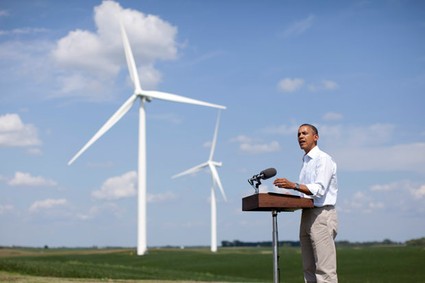
Buildings dominate the Manhattan Skyline and are responsible for approximately 80% of NYC’s carbon emissions (PlaNYC)
Across the global landscape of energy consumption, buildings ranging from single-family homes to corporate sky scrapers dominate as the most energy intensive sector. In New York City alone, buildings account for nearly 80% of the city’s carbon emissions. For this reason, communities across the globe are racing to improve their building designs to cut energy consumption—and they are doing so by looking at and learning from leaders in sustainable design.

Energy Star was founded by the Environmental Protection Agency in 1992
In the U.S., buildings are generally rated on their sustainability using two classification methodologies—the LEED and Energy Star Rating Systems. The LEED cetification program developed by the US Green Building Council grades buildings on their sustainability potential by examining the efficiency of the building’s systems and infrastructure, granting medals in different levels including general certification, silver, gold, and platinum. On the other hand, the Energy Star Program was developed by the EPA benchmarks buildings based on how each building consumes energy (also known as operational efficiency) and rates each building with a score between 1 to 100. For it’s ability to quantify energy efficiency across the board, Energy Star has been the primary benchmarking tool by most including New York City local government, which passed Local Law 87 which required all buildings over 50,000 sqft in NYC to be benchmarked with a Energy Star Rating & it’s data made available to the public.
However as of today, Energy Star only included a limited demographic of building-type such as commercial, residential, and institutional buildings. Museums and art galleries do not qualify for Energy Star evaluation, which has significantly obstructed energy efficiency growth in the museum sphere.
Furthermore, the lack of legislation pressure and indifference of museum decisionmakers has stagnated major infrastructural change to the ways museums are operated through the years, missing opportunities to significantly reduce energy consumption in the spaces and make the best of the millions of dollars spent developing the U.S. art scene each year.
Without the availability of comparison data and transparency in energy efficient operating practices, museum’s practices for operating their buildings have remained isolated and kept from the larger buildings community, hindering potential for efficiency improvement within this demographic of commercial buildings. Facilities managers and operators of large art museum spaces have no option but to operate these spaces based on their best guesses, missing out on opportunities for emissions and financial reductions through collaborating with facilities operators in similar spaces.
This blog series will explore the overall importance of building efficiency in general and how art museum spaces have been an overlooked demographic of building efficiency. First, we’ll identify the identify the systems within these spaces that have potential become more efficient, and how the optimization of these systems may be hindered by spatial requirements and artwork preservation. From there, we’ll look at case studies various museums across the world as well as an exclusive with the Museum of Modern Art (MoMA). In the final part, we’ll bring everything together by discussing sustainability innovation in the global art museum community as well as the existing climate of efficiency legislation for museum buildings.




